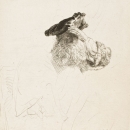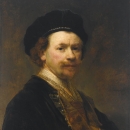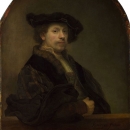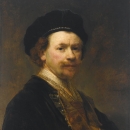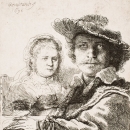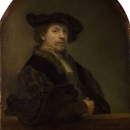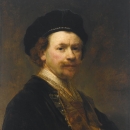- Exhibitions
- Rembrandt: Prints “of a Particular Spirit”
Rembrandt: Prints “of a Particular Spirit”
Rembrandt van Rijn was the premier portrait painter of Amsterdam, and his masterful history paintings drew admiration from aristocratic patrons, but it was his prints that first brought him international acclaim. Imbuing line and tone with technical finesse and ingenuity, Rembrandt crafted resonant images that were prized by connoisseurs and imitated by artists. The contemporary English writer and collector John Evelyn pronounced him “the incomparable [Rembrandt], whose etchings and gravings are of a particular spirit.”
Rembrandt: Prints “of a Particular Spirit” takes an intimate view of Rembrandt’s graphic output during the 1630s, an artistically rich span that corresponds to Rembrandt’s rise from a painter of promise in Leiden to one of the most in-demand portraitists in Amsterdam. Rembrandt’s personal developments and artistic successes were mirrored in his prints. Although his prodigious painting production took up much of his time, he continuously returned to printmaking, finding moments of creative independence in the expressive qualities of etched lines and printed tone. As he refined his technique, he broadened his subject matter to include formal portraits and history and genre scenes. Some of his boldest compositional treatments were subjects that he rarely addressed in paint, but were given exceptional vitality in print, such as his nudes and landscapes, including View of Amsterdam from the Northwest. SHOW MORE
Rembrandt began experimenting with printmaking in the mid-1620s, and his furtive explorations quickly evolved as he mastered the medium. His earliest works are small and address only a handful of human subjects: beggars and the human face. One of his earliest self-portraits, Beggar Seated on a Bank, serves as a humorous foil to the artist he would become. Adopting the guise of a vagrant, Rembrandt sits hunched over, his hand outstretched to the viewer in a sign of supplication. Almost ten years later, at the age of 33, Rembrandt etched Self-Portrait Leaning on a Stone Sill, the graphic predecessor to his celebrated Self Portrait at the Age of 34. In a display of Rembrandt’s self-proclaimed status as heir to the Renaissance Masters—Raphael, Titian and Albrecht Dürer—Rembrandt adopts the guise of a 16th-century courtier, his bearing confident while his gloved hand, prominently placed, curls inward.
Characterized by delicate networks of lines, Rembrandt’s prints imitate the immediacy of drawings but evoke the formalities of careful study and deliberate execution. He conjures visions of everyday life and encounters with the divine. From the grimy street urchins of The Pancake Woman to the heavenly light in The Presentation in the Temple, his spirited handling renders visible the intangible—feelings of pride, reverence, sorrow and fear. It is a testament to Rembrandt’s singularity that we are equally captivated by his etchings today, as audiences were in the 17th century. SHOW LESS





